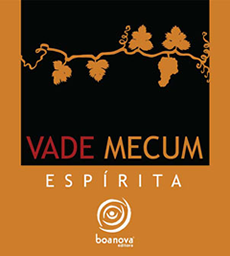Scientists are getting closer to finding worlds that resemble our own "blue marble" of a planet. NASA's Kepler mission alone has confirmed more than 1,000 planets outside our solar system a handful of which are a bit bigger than Earth and orbit in the habitable zones of their stars, where liquid water might exist. Some astronomers think the discovery of Earth's true analogs may be around the corner. What are the next steps to search for life on these potentially habitable worlds?
(Os cientistas estão se aproximando de encontrar mundos que se assemelham ao nosso "planeta azul". A missão Kepler da NASA sozinha confirmou
mais de 1.000 planetas fora do nosso sistema solar - um punhado dos quais são um pouco maiores do que a Terra e órbitam nas zonas habitáveis de
suas estrelas, onde pode existir água líquida. Alguns astrônomos acham que a descoberta dos verdadeiros planetas análogos da Terra pode
estar muito próximo. Quais são os próximos passos para procurar vida nesses mundos potencialmente habitáveis?)
Scientists and engineers are actively working on two technologies to help with this challenge: the starshade, a giant flower-shaped spacecraft; and coronagraphs, single instruments that fit inside telescopes. Both a starshade and a coronagraph block the light of a star, making it easier for telescopes to pick up the dim light that reflects off planets. This would enable astronomers to take pictures of Earth-like worlds -- and then use other instruments called spectrometers to search the planets' atmospheres for chemical clues about whether life might exist there.
(Cientistas e engenheiros estão trabalhando ativamente em duas tecnologias para ajudar a superar este desafio: o "starshade", uma gigante nave
espacial em forma de flor; E coronógrafos, instrumentos únicos que cabem dentro de telescópios. Ambos "Starshade" e coronógrafo bloqueiam
a luz de uma estrela, tornando mais fácil para os telescópios pegar a luz fraca que reflete os planetas. Isso permitiria aos astrônomos tirar
fotos de mundos semelhantes à Terra - e então usar outros instrumentos chamados espectrômetros para procurar nas atmosferas dos
planetas pistas químicas sobre se a vida que, por lá poderia existir)
A new JPL "Crazy Engineering" video visits both technologies at NASA's Jet Propulsion Laboratory in Pasadena, California:
DOWNLOAD VIDEO Crazy Engineering: Starshade/Coronagraph
"Coronagraphs are like visors in your car -- you use them to block the light of the sun so you can see the road," said Nick Siegler, the program chief technologist for NASA's Exoplanet Exploration Program Office at JPL. "Starshades, on the other hand, are separate spacecraft that fly in front of other telescopes, so they are more like driving behind a big truck in front of you to block the light of the sun." Siegler is featured in the Crazy Engineering video.
"Coronagraphs são como viseiras em seu carro - você usá-los para bloquear a luz do sol para que você possa ver a estrada", disse Nick Siegler,
o chefe tecnólogo do programa Exoplanet Exploration Program Office da NASA no JPL. "Starshades, por outro lado, são espaçonaves
separadas que voam na frente de outros telescópios, então eles são mais como dirigir atrás de um caminhão grande na frente de você para
bloquear a luz do sol." Siegler é destaque no vídeo Crazy Engineering.
The starshade would be a large structure about the size of a baseball diamond that deploys in space and flies in front of a space telescope. To view an animation of the starshade unfurling in space, and footage of a prototype at Northrop Grumman's Astro Aerospace in Carpinteria, California, visit:
O "starshade" seria uma grande estrutura como um guarda-chuva que se desdobra no espaço e voa na frente de um
telescópio espacial. Para ver uma animação do "starshade" se desenrolando no espaço e imagens de um protótipo no Astro Aerospace
de Northrop Grumman em Carpinteria, Califórnia, visite:
http://www.jpl.nasa.gov/news/news.php?release=2014-089
Coronagraphs, which use tiny masks to block the light of stars from within a telescope, are also currently in development at JPL, as part of NASA's Wide-Field Infrared Survey Telescope, or WFIRST, mission, led by NASA's Goddard Space Flight Center in Greenbelt, Maryland. A feature story describing how these structures might help glean signs of life on other planets is online at:
Coronagraphs, que usam minúsculas máscaras para bloquear a luz de estrelas de dentro de um telescópio, também estão em
desenvolvimento no JPL, como parte do telescópio Wide-Field Infrared Survey Telescope da NASA, ou missão WFIRST,
liderada pelo Goddard Space Flight Center da NASA em Greenbelt , Maryland. Uma história de destaque descrevendo
como estas estruturas podem ajudar a colher sinais de vida em outros planetas está online em:
http://www.jpl.nasa.gov/news/news.php?release=2016-117
News Media Contact
Whitney Clavin
Jet Propulsion Laboratory, Pasadena, California
818-354-4673
whitney.clavin@jpl.nasa.gov
APRIL 28, 2016
2016-116




 Ciência
Ciência



 Visão Espírita
Visão Espírita